 Indians Archive
Indians Archive  Cleveland Sports Vault: A Cleveland Indians Nickname Quiz
Cleveland Sports Vault: A Cleveland Indians Nickname Quiz
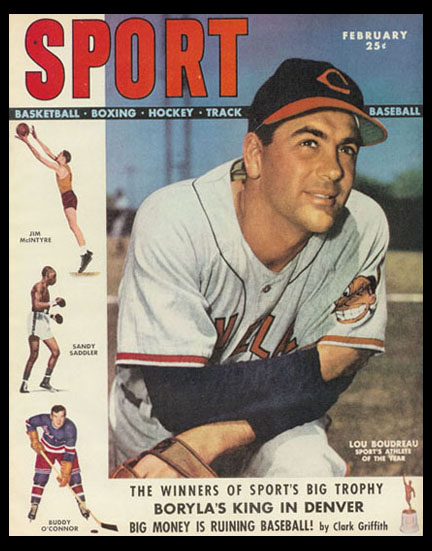 Hey, let’s have some fun. Baseball is back! The old game has enjoyed varying levels of popularity through the generations, and she occasionally shows her warts. But baseball is still as much a part of Americana as hot dogs and apple pie, and with every Opening Day comes the promise of a new spring.
Hey, let’s have some fun. Baseball is back! The old game has enjoyed varying levels of popularity through the generations, and she occasionally shows her warts. But baseball is still as much a part of Americana as hot dogs and apple pie, and with every Opening Day comes the promise of a new spring.
One of the things baseball does well is nicknames. How well do you know the nicknames of Cleveland Indians over the last century or so? I’m thinking you’ll do pretty well, so let’s see it!
I tried to include all of the nicknames I deemed ‘worthy’. By that, I mean I tended to omit nicknames that are commonly attached to particular names, like “Sweet” Lou (Merloni) and “Hot” Carl (Pavano). (Just as, I suppose if we looked hard enough, we could find an “Iron” Mike or a “Big” (eg. “Big” John). It also means I left out reworked surnames, like “Robbie” (Frank Robinson), “Grover” (Mike Hargrove), and “Steiner” (John Lowenstein).
A few nicknames I used are pretty obscure; the ruling was if they are older, but found in mainstream publications, they are fair game. If from my lifetime, the only threshold the nicknames must meet is that I be fond of them!
I omitted Bert “Be Home” Blyleven. I love that, but it wasn’t really his nickname. It was the brainchild of ESPN’s Chris Berman- perhaps the lone redeeming item from Berman’s broadcasting career.
Please feel free to challenge me on any of these, or point out any glaring omissions, in the Indians Boards.
Let’s get to it!
- The Boy Manager ________________________________
- Human Rain Delay ________________________________
- Honey __________________________________________
- Daddy Wags _____________________________________
- Bad News _______________________________________
- Flip ____________________________________________
- Bedford Sheriff ____________________________________
- Rock of Snohomish ________________________________
- Shoeless Joe ____________________________________
- Rapid Robert _____________________________________
- Macho __________________________________________
- Sudden Sam _____________________________________
- The Big Bear _____________________________________
- Baby Bull ________________________________________
- Super Joe _______________________________________
- The Rock ________________________________________
- Stunning Steve ___________________________________
- Joggin’ George ___________________________________
- Large Lenny ______________________________________
- Not Ready _______________________________________
- Dirty Kurt ________________________________________
- Red Hot Rapper ___________________________________
- Bogaloosa Bomber ________________________________
- Bulldog _________________________________________
- Ding Dong _______________________________________
- El Presidente _____________________________________
- Blue Moon _______________________________________
- Satchel __________________________________________
- Boog ___________________________________________
- Moose __________________________________________
- Grey Eagle _______________________________________
- Mr. Clutch ________________________________________
- Senor Smoke _____________________________________
- Hard Hittin _______________________________________
- Mr. May __________________________________________
- Thunder _________________________________________
- Juan Gone _______________________________________
- Doc ____________________________________________
- Mudcat __________________________________________
- Pronk ___________________________________________
- Hawk ___________________________________________
- Gomer __________________________________________
- Sad Sam ________________________________________
- Toothpick ________________________________________
- El Gato __________________________________________
- Flash ___________________________________________
- Chief ____________________________________________
- Immortal Cuban ___________________________________
- Twitchy Dick ______________________________________
- Dr. Smooth _______________________________________
1. The Boy Manager was 24 year old shortstop Lou Boudreau (top photo). He’d only played for about three seasons when he lobbied for the job. His success as a 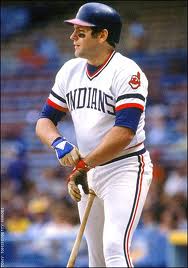 manager was owed to the confidence he had in his ballplayers, and that was the kind of outlook that won him the job. In 1948, he led the Indians to the World Series championship, while winning the AL MVP on the strength of a .355 average and 106 RBI.
manager was owed to the confidence he had in his ballplayers, and that was the kind of outlook that won him the job. In 1948, he led the Indians to the World Series championship, while winning the AL MVP on the strength of a .355 average and 106 RBI.
2. Human Rain Delay: Mike Hargrove (right), who went through a protracted routine of adjusting his jersey, helmet, batting glove, etc. Terry Pluto’s book, The Curse of Rocky Colavito, identifies then-announcer Joe Tait as the inventor of the nickname.
3. Honey was Catcher Johnny Romano. Apparently, he was called “a honey” when he was a baby, and it stuck. Some kids just don't stand a chance.
4. Daddy Wags was 1960s slugger Leon Wagner. He appeared in "Bingo Long's All Stars" with Billy Dee Williams, Richard Pryor and James Earl Jones. The nickname came from an ad for his California clothing store: "Get your rags from Daddy Wags."
5. Bad News- Odell Hale was a second baseman for the Indians in the 1930s. A clutch hitter, he was “Bad News” for opposing 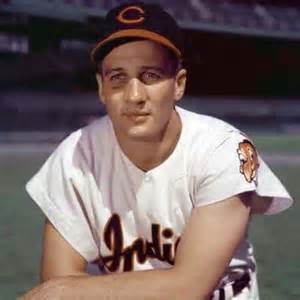 pitchers. Interesting fact: Schneider’s Cleveland Indians Encyclopedia notes an instance when a game-ending triple play was started after a line drive ripped through his glove, hit him in the forehead, and caromed to the shortstop!
pitchers. Interesting fact: Schneider’s Cleveland Indians Encyclopedia notes an instance when a game-ending triple play was started after a line drive ripped through his glove, hit him in the forehead, and caromed to the shortstop!
6. Flip was Al Rosen (left). A flipper is an old-school term for a softball pitcher. Rosen, a Tribe star in the 1950s, apparently was a 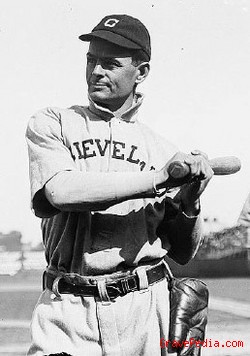 flipper in his school days. A four-time All-Star who led the league in home runs twice and RBI twice. I just read he also was called the “Hebrew Hammer”.
flipper in his school days. A four-time All-Star who led the league in home runs twice and RBI twice. I just read he also was called the “Hebrew Hammer”.
7. Bedford Sheriff- Elmer Flick (right) was a speedy outfielder and a good hitter. He played most of his Hall of Fame career with the Cleveland Bronchos/Naps. The nickname comes from his hailing from Bedford, Ohio. However, his having lived 100 years ago makes my standard question moot (I always ask Bedfordians (?) if they’ve ever met famous daughter Halle Berry).
8. Rock of Snohomish. Earl Averill was from Snohomish, Washington. He was a star outfielder for the Indians through the 1930s. Matter-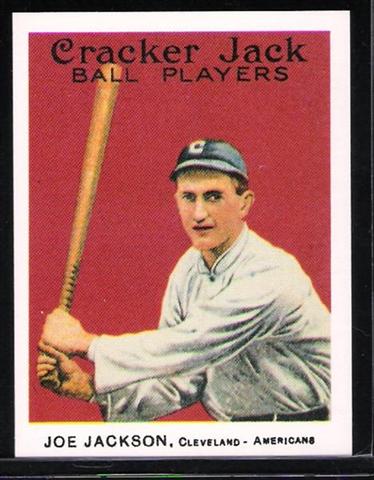 of-factly, he simply gave his family instructions to decline his entry into the Hall of Fame if offered after his death. There was no campaign for his candidacy. He was elected eight years prior to his death. Good for him.
of-factly, he simply gave his family instructions to decline his entry into the Hall of Fame if offered after his death. There was no campaign for his candidacy. He was elected eight years prior to his death. Good for him.
9. "Shoeless” Joe Jackson (left). One of the best players in the history of baseball. Somewhat of a simpleton, he got swept up into the Black Sox scandal during the 1919 World Series. As for the nickname, from Wikipedia:
According to Jackson, he got his nickname during a mill game played in Anderson, South Carolina. Jackson suffered from blisters on his foot from a new pair of cleats, and they hurt so much that he had to take his shoes off before an at bat. As play continued, a heckling fan noticed Jackson running to third base in his socks, and shouted "You shoeless son of a gun, you!", and the resulting nickname "Shoeless 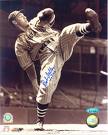 Joe" stuck with him throughout the remainder of his life.
Joe" stuck with him throughout the remainder of his life.
10. Rapid Robert was Bob Feller, of course (right). Perhaps the best player in Cleveland Indians history. The more I’d write here, the less justice I’d give him. I guess I am a little intimidated by the enormity and gravity of the guy’s career, legend, military service…
 11. Macho. Here’s where I break the rule about not using a re-worked last name. But come on, it’s Macho Camacho! 1980s Manager Pat Corrales knew the Macho Man had the physical ability to star as a relief pitcher. The issue with the closer was between the ears.
11. Macho. Here’s where I break the rule about not using a re-worked last name. But come on, it’s Macho Camacho! 1980s Manager Pat Corrales knew the Macho Man had the physical ability to star as a relief pitcher. The issue with the closer was between the ears.
12. Sudden Sam McDowell (left). A lefty starting pitcher who was said to have Bob Feller/Sandy Koufax type of stuff. He seemed conflicted throughout his career, experimenting with less than his best stuff when his fastball was enough to dominate with.
13. The Big Bear. Mike Garcia was a right-handed starting pitcher in the early 1950s, on perhaps the best staff in history. The ‘big four’ boasted Garcia, Bob Lemon, Early Wynn, and Bob Feller.
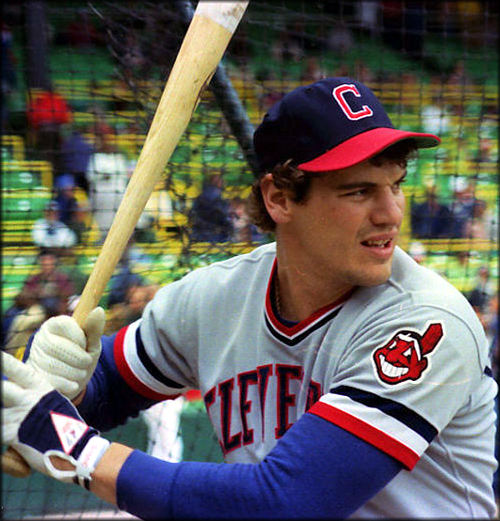 14. Baby Bull was Manny Ramirez. I still say it was a mistake on his part to depart from the Indians (although it was reported at the time that although he’d signed with Boston, he seemed a little surprised that he was going to have to leave Cleveland…?). He’d have been sheltered from the spotlight and national attention for a lot longer if he’d have stayed, and that may have benefitted both Cleveland and him (large payroll obligation notwithstanding). Or not.
14. Baby Bull was Manny Ramirez. I still say it was a mistake on his part to depart from the Indians (although it was reported at the time that although he’d signed with Boston, he seemed a little surprised that he was going to have to leave Cleveland…?). He’d have been sheltered from the spotlight and national attention for a lot longer if he’d have stayed, and that may have benefitted both Cleveland and him (large payroll obligation notwithstanding). Or not.
15. Super Joe Charboneau (right) apparently owes his nickname to Cleveland sports writer Terry Pluto. Fans loved his various eccentricities. Super Joe was a worthy Rookie of the Year winner in 1980. Unfortunately, he hurt his back in a slide in spring training in 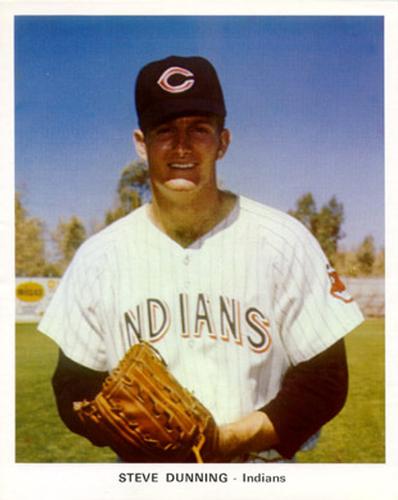 1981, and was never the same.
1981, and was never the same.
16. The Rock. Rocco Domenico Colavito, Jr. Rocky was a local favorite, a power hitting right fielder with a great arm. Traded away by Frank Lane in a terrible deal that also broke Tribe fans’ hearts. Reacquired years later by Gabe “Pope” Paul in another horrible trade.
17. Stunning Steve Dunning (left)- the nickname was kind of a play on “Sudden Sam”, who was also on that Indians starting staff. Hailed as a top draft choice, Dunning debuted in 1970, going 18-29 with a 4.37 ERA over four seasons in Cleveland.
18. Joggin’ George Hendrick was a naturally gifted outfielder who appeared to take a nonchalant attitude toward playing. His naturally shy demeanor exacerbated his aloof appearance. Manager Frank Robinson installed Hendrick as a team captain, 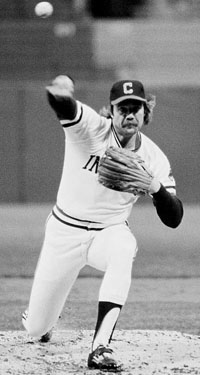 infuriating veteran pitchers such as Gaylord Perry, who didn’t even want Hendrick playing when he pitched.
infuriating veteran pitchers such as Gaylord Perry, who didn’t even want Hendrick playing when he pitched.
19. Large Lenny Barker. Barker (right) is renowned for his 1981 perfect game at home against the Toronto Blue Jays, but he was a really good starting pitcher for a few seasons. In 1980, he won 19 games (for a bad Indians team), and he led the league in strikeouts with 181.
20. Rich “Not Ready” Yett. While used by some, this probably wasn’t a full-fledged nickname. But it is too perfect to ignore. Yett was a 1980s pitcher who was mostly relegated to long relief due to various bouts of ineffectiveness.
21. Dirty Kurt Bevacqua debuted with the Indians in the early 70s, as a utility ballplayer. He always seemed to be wearing a dirty uniform. Had some success in the big leagues for a couple teams, long after his stay in Cleveland. His career was also marked by various brawls and feuds. A rant against Dirty Kurt by Dodger manager Tommy Lasorda is readily searchable online.
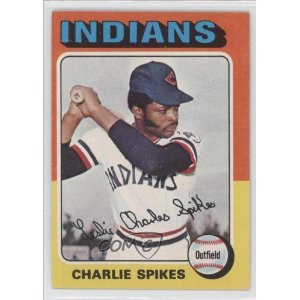 22. Red Hot Rapper- Rudy Regalado was a non-roster player in 1954. But in spring training that year, he couldn’t be stopped at the plate. He was a sensation, holding down second base for holdout Bobby Avila. As the season approached, Avila signed, Al Rosen was moved from third base to first, and Regalado was installed at third. When the season started, Regalado stopped hitting, playing his way back out of the lineup.
22. Red Hot Rapper- Rudy Regalado was a non-roster player in 1954. But in spring training that year, he couldn’t be stopped at the plate. He was a sensation, holding down second base for holdout Bobby Avila. As the season approached, Avila signed, Al Rosen was moved from third base to first, and Regalado was installed at third. When the season started, Regalado stopped hitting, playing his way back out of the lineup.
23. Bogaloosa Bomber- Charlie Spikes (left) was a young power hitter in the mid 70s that had some potential. The Indians acquired him from the Yankees in one of those really bad deals that stocked the New York roster. Some say manager Frank Robinson’s stern approach was an unfortunate match for the shy Spikes. The nickname was popularized by announcer and former Tribe pitcher Mudcat Grant (say it sloooooowly).
24. Bulldog was starting pitcher Orel Hershiser. The Dodgers thought he was at the end of the line. He was close, but the mid-90s Indians relied heavily on his veteran leadership.
25. Ding Dong- Pitcher Gary Bell, who pitched for the Indians from the mid 50s through the mid 60s. Some thought he should have been meaner, that being too easy going hindered his effectiveness. He disagrees.
26. El Presidente. Dennis Martinez, along with Orel Hershiser, was a veteran starter whom the Indians brought aboard to match up with their heavy hitting lineup in the mid 90s. Achieved a lot of success over his career, notably with Baltimore. In the discussion when the subject of ‘best pitchers not in the Hall of 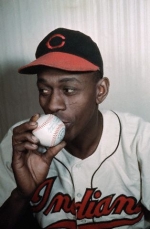 Fame’ comes up.
Fame’ comes up.
27. John "Blue Moon" Odom. He was acquired by the Tribe in 1975, bringing a huge chip on his shoulder with him from Oakland. A thorn in manager Frank Robinson’s side, he was eventually traded again, later that same season- to Atlanta.
28. Satchel- Leroy Robert Paige. Sure, Satchel (right) is a nickname, but it is more a part of his identity than his real name (much like #29, below). Famously was at the end of his career when Tribe owner Bill Veeck brought him onto the club during the 1948 championship season. Paige helped the Indians win some important games down the stretch. He had many pitches, all with pet names.
29. Boog- John Wesley Powell. Had a nice season when he was reunited with Frank Robinson in Cleveland in 1975. At first glance, he would seem to have earned Man of the Year. However, that went to reliever Dave LaRoche.
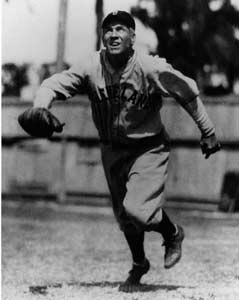 30. Moose Solters was an Indians outfielder in the 1930s. Later, while with the White Sox, he was struck in the head with a ball during practice, causing blindness.
30. Moose Solters was an Indians outfielder in the 1930s. Later, while with the White Sox, he was struck in the head with a ball during practice, causing blindness.
31. Grey Eagle- Tris Speaker (left). In his early years with Boston, he and Ty Cobb were perhaps the biggest baseball stars, immediately pre-Babe Ruth. A player-manager who patrolled center field at League Park (Dunn Field, as it was called at the time) in the championship season of 1920. An aggressive fielder, he sometimes covered second base on throws from the catcher. Played shallow center field, and was able to cover his position. Clevelander Bob Hope’s favorite player from his youth.
32. Mr. Clutch- Pat Tabler. He began to earn his reputation for hitting in bases-loaded situations while with Cleveland, in the 1980s. Over his career, he was 43 for 88 (.489) with 108 RBI.
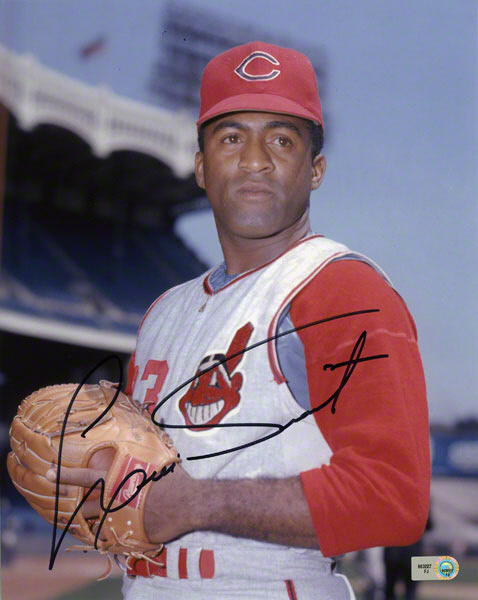 33. Senor Smoke- Luis Tiant (right) was a pitcher signed out of Cuba by the Indians in 1961, at the recommendation of scout and former Tribe star Bobby Avila. He pitched well-when healthy-for the Indians in the late 60s. Was shipped off to Minnesota in a trade that brought pitcher (and Ohioan) Dean Chance and young third baseman Graig Nettles to Cleveland.
33. Senor Smoke- Luis Tiant (right) was a pitcher signed out of Cuba by the Indians in 1961, at the recommendation of scout and former Tribe star Bobby Avila. He pitched well-when healthy-for the Indians in the late 60s. Was shipped off to Minnesota in a trade that brought pitcher (and Ohioan) Dean Chance and young third baseman Graig Nettles to Cleveland.
34. Hard Hittin Mark Whiten bounced around the major leagues. He had a great arm, and could hit for astonishing power. But Whiten was also the epitome of inconsistency.
35. Mr. May... George Steinbrenner mockingly called Dave Winfield Mr. May while he was a Yankee. It was a play on Reggie Jackson's nickname, "Mr. October." It may not be a true nickname, but it's really funny. The Hall of Famer Winfield was mainly a valuable bench presence on the 1995 Indians. Back in 1972 at the University of Minnesota, he was one of the 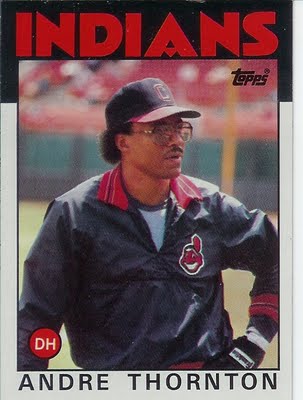 basketball players under coach (Clevelander) Bill Musselman who shamefully attacked the Ohio State Buckeye team during a game.
basketball players under coach (Clevelander) Bill Musselman who shamefully attacked the Ohio State Buckeye team during a game.
36. Thunder Thornton (left) was the glue that held the late 70s and mid 80s Indians teams together. He was often the only reliable hitter. Yet, he was underappreciated. He overcame personal family tragedy and various injuries. Incredibly, when Joe Charboneau attempted to come back from his own injuries, Thornton was booed by the home crowd, who saw him as a road block for Super Joe. In his Curse of Colavito book, Terry Pluto discusses the missed opportunity by the Indians in overlooking a willing Thornton as a front office guy. He's still heavily involved in charity work in Cleveland.
37. Juan Gone- Juan Gonzalez was a free agent signing for the Tribe for the 2001 season. He had a tremendous year, including in the playoffs. The Indians resigned him in 2005, and an injury sidelined him, paving the way for Grady Sizemore.
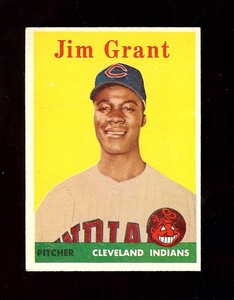 38. Doc- Dwight Gooden spent a couple seasons with the contending Indians in the Jacobs Field era.
38. Doc- Dwight Gooden spent a couple seasons with the contending Indians in the Jacobs Field era.
39. Mudcat Grant (right) was a promising young starter with the late 1950s Indians. Cal McLish, Grant, Jim Perry, Gary Bell… and Herb Score, who suffered being severely struck by a batted ball in ’57. Grant was eventually traded to the Twins. After his retirement, he caused many a smile with his homespun announcing style during televised Indians games.
40. Pronk. Utility infielder Bill Selby is credited for coming up with Travis Hafner’s nickname. The nickname refers to “half project, half donkey.” In polite circles, it is said Selby chose “donkey” in reference to how Hafner runs. But most fans know that’s not the real reason.
41. Hawk. Sorry, I should have made a rule to exclude all crappy Chicago White Sox announcers. If you really want some 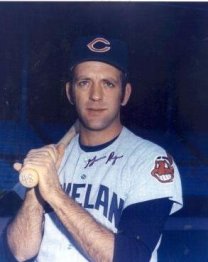 information on him, I guess I'd refer to his connection to the sad story of Tony Horton.
information on him, I guess I'd refer to his connection to the sad story of Tony Horton.
42. “Gomer” Hodge (left) was named after Gomer Pyle, the smiling bumpkin from the Andy Griffith television series. He famously started a season red-hot, getting hits in his first four at-bats and declaring he was “hitting 4,000.”
43. Sad Sam Jones was a native Ohioan who enjoyed a long major league career. His first big league seasons were in 1914-1915, with the Indians.
44. Toothpick Sam Jones was also from Ohio. He debuted with the Indians in 1951. In 1952, he joined catcher Quincy Trouppe in 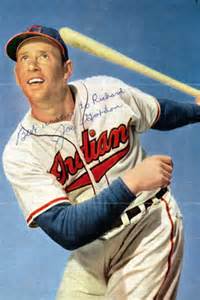 forming part the first black battery (pitcher/catcher) in big league history.
forming part the first black battery (pitcher/catcher) in big league history.
45. El Gato- Felix “the Cat” Fermin was a defensive standout at shortstop for the Indians in the early 1990s. He was an average hitter who seldom struck out. He had been the replacement for Jay Bell. Along with Reggie Jefferson, he was traded to the Seattle Mariners for Omar Vizquel.
46. Flash- Second baseman Joe Gordon (right)- although to this day, everyone who is named Gordon is called “Flash”, in honor of the science fiction comic book hero that dates back to the 1930s.
Joe Gordon was the second baseman who ‘blocked’ Larry Doby, with the latter becoming groomed as a center fielder by manager Lou Boudreau. Gordon and Doby famously became quick friends, as Indians teammates. Gordon also managed, in Cleveland and 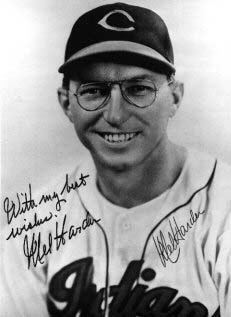 elsewhere.
elsewhere.
47. Chief- Mel Harder (left) may or may not have been the ultimate Cleveland Indian, but he’s in the conversation. He pitched over a long career at League Park; he opened Cleveland Stadium. He even posed for photographs with 1990s starter Charles Nagy when Jacobs Field opened. Harder was instrumental in developing several notable pitchers, as an Indians coach.
48. Immortal Cuban- Joe Azcue was a catcher out of Cuba who spent over half of his big league career with the Indians, through the 1960s.
49. Twitchy Dick Porter’s nickname screams ‘old school’. He played balls off that short-but-high right field fence at League Park.
50. Dr. Smooth. Our very own Michael Brantley. A guy I’m liking more and more, the less I associate him with the trade that brought him to town (he was the player to be named later in the CC Sabathia trade with Milwaukee).

- NBA Announces 2013-2014 Schedule
- Browns Ink Sharknado
- Sharknado A No-Show For Rookie Camp
- Trent Richardson Out Until Training Camp
- Browns Sign Brandon Jackson
- Carrasco Suspended Eight Games
- Browns Add to Wide Receiver Depth with David Nelson
- Browns Need to Learn from Past Draft Mistakes
- Browns Release Chris Gocong and Usama Young
- Browns Missing on Grimes Disappointing, But Not The End
The TCF Forums
- Chris Grant's first 3 drafts
Kingpin74 (Tuesday, January 21 2014 10:13 AM) - The 2014 Offseason Thread
googleeph2 (Tuesday, January 21 2014 9:36 AM) - 2015 Recruiting
furls (Tuesday, January 21 2014 6:57 AM) - Mike Brown
YahooFanChicago (Monday, January 20 2014 11:15 PM) - Movies coming out
HoodooMan (Monday, January 20 2014 9:34 PM) - 2014 Hoops Hockey Hijinx
jpd1224 (Monday, January 20 2014 4:44 PM) - 2014 Recruiting
jclvd_23 (Monday, January 20 2014 2:26 PM) - Wish List - #4 Pick
Hikohadon (Monday, January 20 2014 1:26 PM) - Official- Browns Coach Search/Rumors
OldDawg (Sunday, January 19 2014 6:48 PM) - #1 overall pick Anthony Bennett
TouchEmAllTime (Sunday, January 19 2014 1:28 PM)



